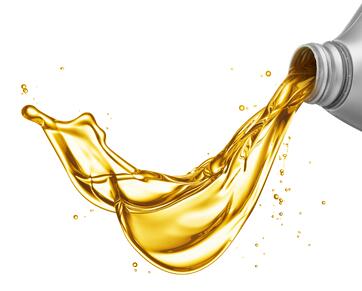Enhanced Oil Recovery Techniques have been used to successfully extract crude oil from oil fields. According to the Energy Department's Office of Fossil Energy, EOR techniques have allowed "30 to 60 percent, or more, of the reservoir's original oil in place."
 There are many types of EOR techniques including polymer flooding. This advanced technique is the process of injecting viscous fluid that assists in crude oil displacement. In the field of fluid mechanics, the process of displacement refers to the immersion of an object in a fluid. Simply put, the measurement of the total volume of fluid inserted and required to take the place of the original object is displacement. Tying the fluid mechanics method with EOR, different types of polymers are used in the polymer flooding process.
There are many types of EOR techniques including polymer flooding. This advanced technique is the process of injecting viscous fluid that assists in crude oil displacement. In the field of fluid mechanics, the process of displacement refers to the immersion of an object in a fluid. Simply put, the measurement of the total volume of fluid inserted and required to take the place of the original object is displacement. Tying the fluid mechanics method with EOR, different types of polymers are used in the polymer flooding process. A paper written by Dupas, Henaut, Argillier, and Aubry of the French Institute of Petroleum ,"Mechanical Degradation Onset of Polyethylene Oxide Used as a Hydrosoluble Model Polymer for Enhanced Oil Recovery" (Oil & Gas Science and Technology Journal, 2012), focuses on water soluble polymers for polymer flooding and the challenges of mechanical degradation. Using RheoSense's extensional viscometer, e-VROC, the authors were able to conduct a study on the effects of mechanical degradation at various extensional and shear viscosity.
To read more regarding the publication, you can view the published abstract here.
Mechanical Degradation Onset of Polyethylene Oxide Used as a Hydrosoluble Model Polymer for Enhanced Oil Recovery
A. Dupas, I. Hénaut, J.-F. Argillier and T. Aubry
Oil Gas Sci. Technol. – Rev. IFP Energies nouvelles 67 (6) 931-940 (2012)
DOI: http://dx.doi.org/10.2516/ogst/2012028
Using Extensional Viscosity for Material Performance
Extensional or elongational viscosity is ideal when it comes to studying the complex properties of fluids used in many industrial applications. e-VROC Viscometer enables successful apparent extensional viscosity measurements through the process of monitoring the sample flow through a microfluidic contraction where the pressure upstream and downstream of the contraction can depict the changes in flow.
Unique applications including:
- Fiber Extrusion
- Paint Rolling
- Blow Molding
- Ink Jet Printer Nozzles
- Sheet/Film Drawing
- Flow through a Porous Media
To learn more, view the e-VROC Viscometer product page or 


